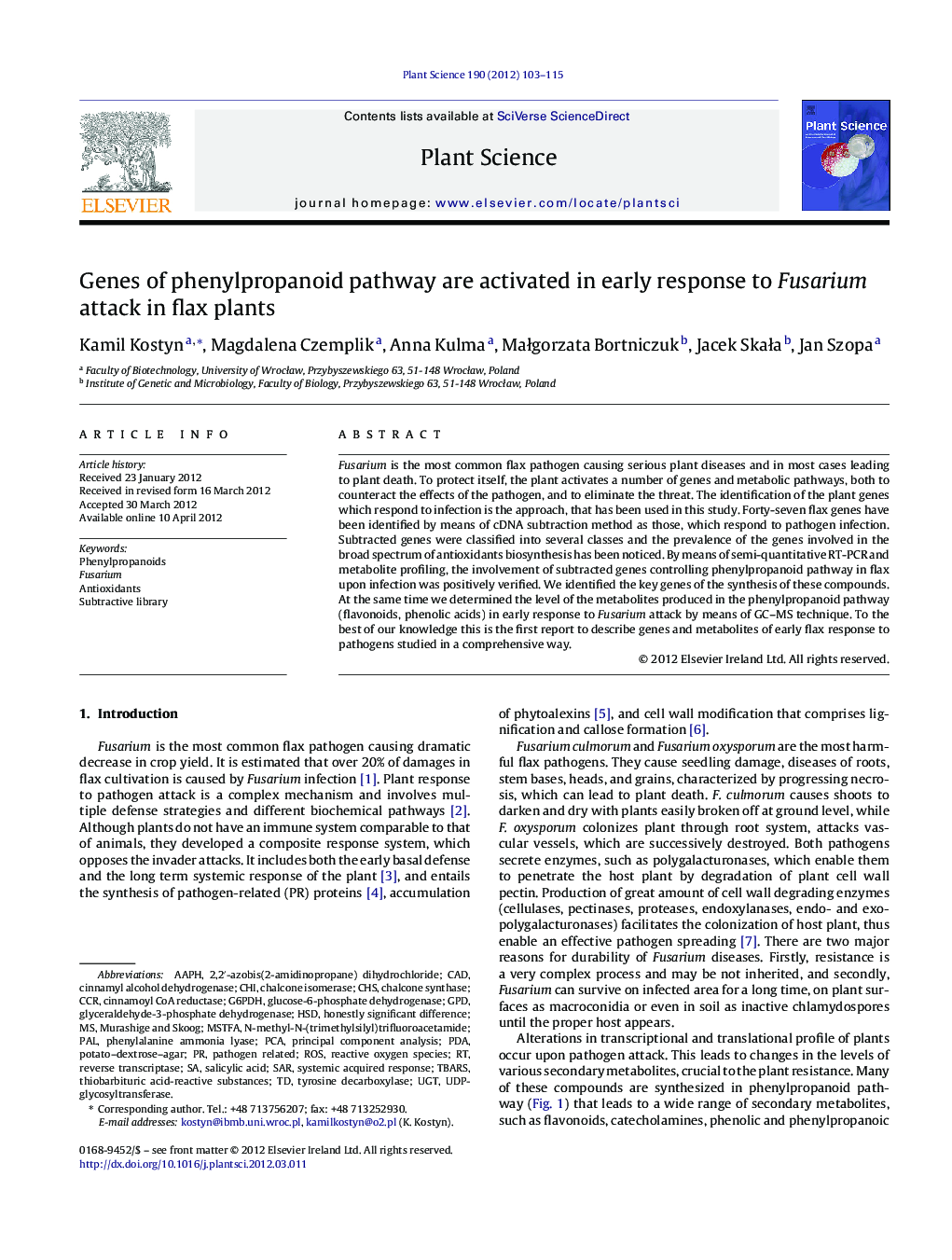| Article ID | Journal | Published Year | Pages | File Type |
|---|---|---|---|---|
| 2017425 | Plant Science | 2012 | 13 Pages |
Fusarium is the most common flax pathogen causing serious plant diseases and in most cases leading to plant death. To protect itself, the plant activates a number of genes and metabolic pathways, both to counteract the effects of the pathogen, and to eliminate the threat. The identification of the plant genes which respond to infection is the approach, that has been used in this study. Forty-seven flax genes have been identified by means of cDNA subtraction method as those, which respond to pathogen infection. Subtracted genes were classified into several classes and the prevalence of the genes involved in the broad spectrum of antioxidants biosynthesis has been noticed. By means of semi-quantitative RT-PCR and metabolite profiling, the involvement of subtracted genes controlling phenylpropanoid pathway in flax upon infection was positively verified. We identified the key genes of the synthesis of these compounds. At the same time we determined the level of the metabolites produced in the phenylpropanoid pathway (flavonoids, phenolic acids) in early response to Fusarium attack by means of GC–MS technique. To the best of our knowledge this is the first report to describe genes and metabolites of early flax response to pathogens studied in a comprehensive way.
► We identified defense genes in flax in the early stages of germination induced in response to Fusarium. ► Genes of phenylopropanoid pathway are among the first to change Fusarium attack. ► Increase in antioxidant potential of flax plants results from the elevated level of phenylpropanoid compounds.
